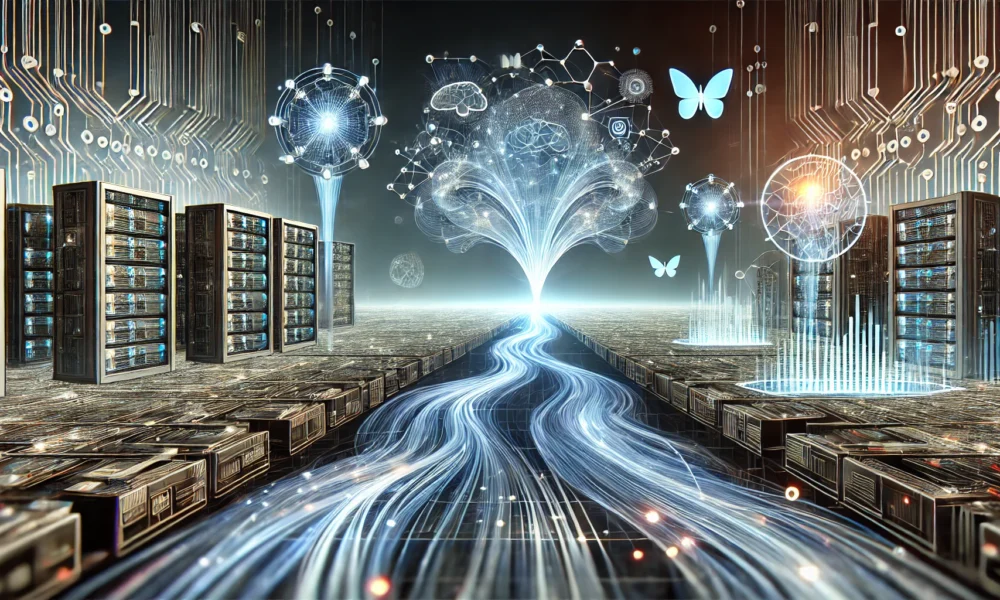Unlocking the Power of Logical Reasoning in Large Language Models
Large Language Models (LLMs) have made significant strides in natural language processing, excelling in text generation, translation, and summarization. However, their ability to engage in logical reasoning poses a challenge. Traditional LLMs rely on statistical pattern recognition rather than structured reasoning, limiting their problem-solving capabilities and adaptability.
To address this limitation, researchers have integrated Reinforcement Learning (RL) with Chain-of-Thought (CoT) prompting, leading to advancements in logical reasoning within LLMs. Models like DeepSeek R1 showcase remarkable reasoning abilities by combining adaptive learning processes with structured problem-solving approaches.
The Imperative for Autonomous Reasoning in LLMs
-
Challenges of Traditional LLMs
Despite their impressive capabilities, traditional LLMs struggle with reasoning and problem-solving, often resulting in superficial answers. They lack the ability to break down complex problems systematically and maintain logical consistency, making them unreliable for tasks requiring deep reasoning.
-
Shortcomings of Chain-of-Thought (CoT) Prompting
While CoT prompting enhances multi-step reasoning, its reliance on human-crafted prompts hinders the model’s natural development of reasoning skills. The model’s effectiveness is limited by task-specific prompts, emphasizing the need for a more autonomous reasoning framework.
-
The Role of Reinforcement Learning in Reasoning
Reinforcement Learning offers a solution to the limitations of CoT prompting by enabling dynamic development of reasoning skills. This approach allows LLMs to refine problem-solving processes iteratively, improving their generalizability and adaptability across various tasks.
Enhancing Reasoning with Reinforcement Learning in LLMs
-
The Mechanism of Reinforcement Learning in LLMs
Reinforcement Learning involves an iterative process where LLMs interact with an environment to maximize rewards, refining their reasoning strategies over time. This approach enables models like DeepSeek R1 to autonomously improve problem-solving methods and generate coherent responses.
-
DeepSeek R1: Innovating Logical Reasoning with RL and CoT
DeepSeek R1 exemplifies the integration of RL and CoT reasoning, allowing for dynamic refinement of reasoning strategies. Through techniques like Group Relative Policy Optimization, the model continuously enhances its logical sequences, improving accuracy and reliability.
-
Challenges of Reinforcement Learning in LLMs
While RL shows promise in promoting autonomous reasoning in LLMs, defining practical reward functions and managing computational costs remain significant challenges. Balancing exploration and exploitation is crucial to prevent overfitting and ensure generalizability in reasoning across diverse problems.
Future Trends: Evolving Toward Self-Improving AI
Researchers are exploring meta-learning and hybrid models that integrate RL with knowledge-based reasoning to enhance logical coherence and factual accuracy. As AI systems evolve, addressing ethical considerations will be essential in developing trustworthy and responsible reasoning models.
Conclusion
By combining reinforcement learning with chain-of-thought problem-solving, LLMs are moving towards becoming autonomous reasoning agents capable of critical thinking and dynamic learning. The future of LLMs hinges on their ability to reason through complex problems and adapt to new scenarios, paving the way for advanced applications in diverse fields.
-
What is Reinforcement Learning Meets Chain-of-Thought?
Reinforcement Learning Meets Chain-of-Thought refers to the integration of reinforcement learning algorithms with chain-of-thought reasoning mechanisms to create autonomous reasoning agents. -
How does this integration benefit autonomous reasoning agents?
By combining reinforcement learning with chain-of-thought reasoning, autonomous reasoning agents can learn to make decisions based on complex reasoning processes and be able to adapt to new situations in real-time. -
Can you give an example of how this integration works in practice?
For example, in a game-playing scenario, an autonomous reasoning agent can use reinforcement learning to learn the best strategies for winning the game, while using chain-of-thought reasoning to plan its moves based on the current game state and the actions of its opponent. -
What are some potential applications of Reinforcement Learning Meets Chain-of-Thought?
This integration has potential applications in various fields, including robotics, natural language processing, and healthcare, where autonomous reasoning agents could be used to make complex decisions and solve problems in real-world scenarios. - How does Reinforcement Learning Meets Chain-of-Thought differ from traditional reinforcement learning approaches?
Traditional reinforcement learning approaches focus primarily on learning through trial and error, while Reinforcement Learning Meets Chain-of-Thought combines this with more structured reasoning processes to create more sophisticated and adaptable autonomous reasoning agents.



